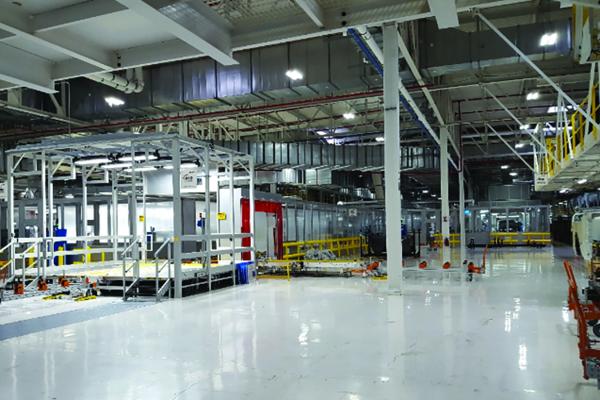Chillers
The Sterling Heights facility, producing jet engines for the U.S. Army, has undergone extensive overhauls and re-tooling in the last decade. In 2010, Stellantis announced it would invest nearly $850 million in a new state-of-the-art paint shop at the SHAP Site, as well as the installation of new machinery, tooling and material-handling equipment. The following year, the company added another $165 million to the investment to build a one million-square-foot body shop.
The EXPO & Conference focuses on “Optimizing On-site Utilities Powering Automation.” Experts from all over the world convened to discuss compressed air, pneumatics, motors and drives, vacuum, aeration blower and chiller/cooling and water treatment systems.
Held November 2-4, 2021, this 3rd installment of the event continued to provide continuing education, certification and networking opportunities to equipment sales engineers, engineering firm and manufacturing plant personnel.
[ Read Full Story ]
Water-cooled chiller plants have three major components that consume electricity: the chiller, the condenser and evaporator pumps, and the cooling tower fan. The chiller consumes the highest amount of total plant room energy. In certain applications, the energy consumption of a chiller is very significant.
[ Read Full Story ]
Röchling required a new comprehensive cooling system for their facility. The forward thinking management elected to pursue a system that was not only reliable and cost effective, but would incorporate industry leading technology for efficiency and built-in designs for redundancy. Their facility required both a cooling tower system and a chiller system. Below are the design features of each of these Thermal Care systems, and the benefits of some of the unique features are explained.
[ Read Full Story ]
Our simplified business model is to melt plastic and cool it back into the form we want – and cooling water makes this happen. We need to optimize chilled water temperature and flow to ensure that our production machines make consistent finished products. In molding application, we cool the plastic through conduction and convection directly. Blown film is different in that cooling-water cools the air and then an air handler cools the plastic.
[ Read Full Story ]
Free cooling is a type of process cooling system design that takes advantage of ambient temperatures to reduce or even eliminate chiller operation. Chillers consume large amounts of energy; so, reducing a chiller’s operating hours per year can result in significant bottom line savings for your company. In this article, we will review a typical free cooling system design, some of the considerations for your system, and finally, how these considerations impact your system’s ability to capitalize on the free cooling operation.
[ Read Full Story ]
Hospitals account for nearly 5% of the total energy use in the United States each year. The average 200,000 ft2 facility spends about $13,600 per bed, or roughly $680,000 annually, on energy costs. Why so much? Operating twenty-four hours a day, thousands of employees, patients, and visitors cycle through campus buildings daily. Additionally, hospitals maintain high ventilation rates to lessen the risk of microbial contamination; the conditioning requirements of this outdoor air represents significant energy usage. Lastly, the use of sophisticated imaging equipment, electronic health record systems and other operations generates heat that must be compensated for via the site’s cooling load.
[ Read Full Story ]
rPlanet Earth is a rarity in the plastics recycling and manufacturing industry. After all, its operation in Vernon, California, is the world’s only vertically integrated facility able to convert polyethylene terephthalate (PET) packaging waste into recycled PET (rPET) packaging for food and beverage industries. Yet, rPlanet Earth is much like any other plastics company in one key aspect: it must maintain production efficiencies to meet growing demand for its high-quality products.
[ Read Full Story ]
Reducing fossil fuel use is key to meeting the dual goal of carbon and energy cost reduction. A Full Heat Recovery Engagement (FHRE) approach can dramatically reduce both, through applying simple principles and using existing technology. Simple measures can help focus the design of both the buildings served and the systems used to achieve these goals.
[ Read Full Story ]
Atlas Copco made headlines recently after introducing itself to the U.S. industrial process cooling chiller market with the launch of the TCX 4-90A chiller range. Chiller & Cooling Best Practices Magazine interviewed Robert Tucker to learn about Atlas Copco’s strategy in the United States. Tucker, a business development manager with more than 30 years of industrial fluid dynamics experience, leads the U.S. process cooling chiller initiative within the Atlas Copco Compressor Oil-free Air Division.
[ Read Full Story ]
Chiller & Cooling Best Practices Magazine spoke with Tom Pagliuco, Executive Director Global Energy Engineering at AbbVie, Inc. about best practices for optimizing chilled water systems in today’s pharmaceutical operations.
[ Read Full Story ]

